Niklas Reichelt
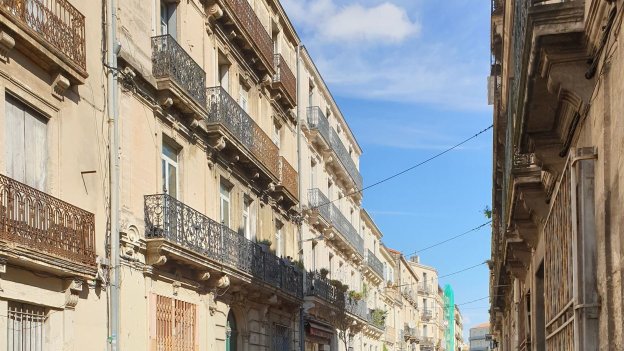 Privat
Privat
Niklas Reichelt spent his research stay in Montpellier
"Thanks to the support of a Prof Bingel Scholarship I was able to gain valuable insight into bioinformatics and statistics for the evaluation of transcriptomes in the context of my PhD thesis. It also allowed me to make valuable contacts for the future, in both my professional and private life."
Niklas Reichelt is a German PhD student who was able to spend time researching in France thanks to the support of the Prof. Bingel Scholarship of the DAAD Foundation.
Here, he talks about his diverse experiences:
Research and results
Thanks to funding through a ‘Prof Bingel Scholarship’ from the DAAD Stiftung, I spent the summer of 2021 in Montpellier in France. In addition to enjoying a wide range of cultural and culinary experiences, I was able to make crucial progress on one of my research projects, part of my intended thesis at the University of Würzburg. In this my focus is mainly directed at identifying previously unidentified regulators of the heat stress response in plants, for which I am using the natural variation of various ecotypes within the Arabidopsis thaliana plant model organism. Through a collaboration with Prof Benoit Lacombe and Dr Gabriel Krouk's working group at SupAgro in Montpellier, I used the stay funded through a ‘Prof Bingel Scholarship’ to investigate the gene expression of three ecotypes following heat stress treatment.
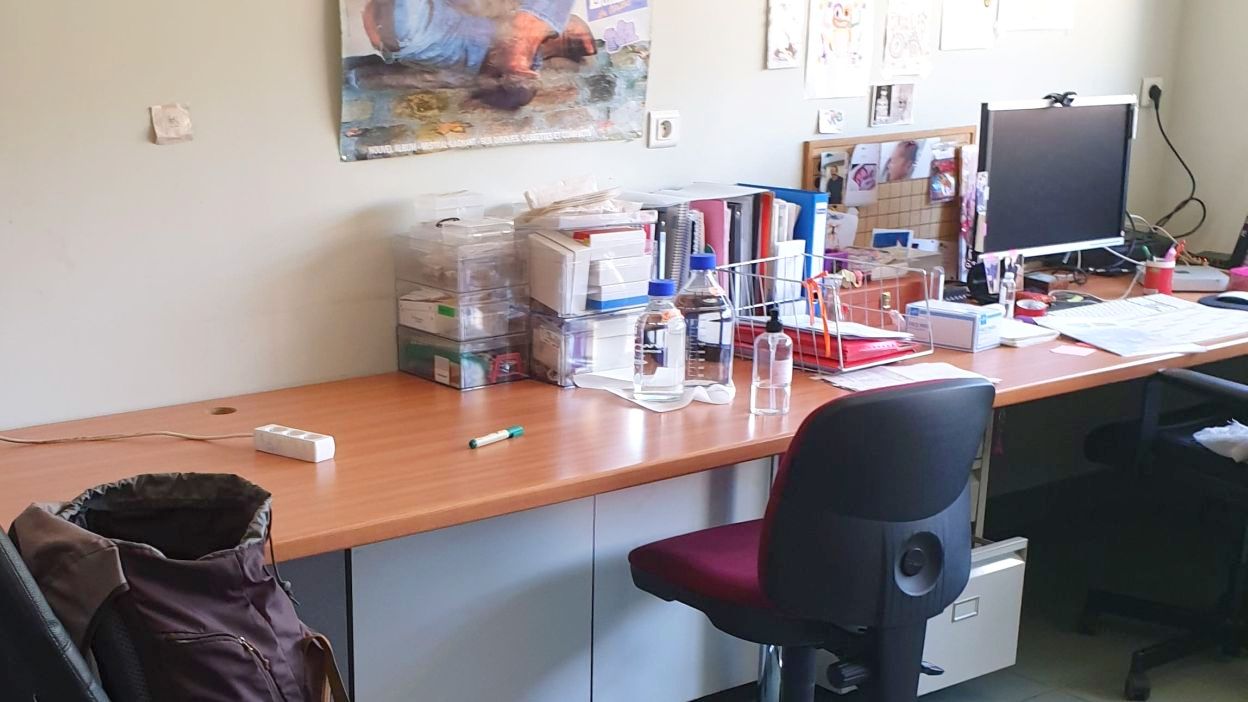
Privat
Niklas Reichelt's workplace at SupAgro
Heat stress experiments in the lab up to sequencing had already been underway before I started my scholarship. The project in Montpellier included a number of subsequent stages of bioinformatic analysis of the transcriptomes and statistics. All the scripts were written in Bash or R. An initial ‘quality trim’ of the raw sequencing data was followed by a range of methods of data validation. Significant differences in gene regulation were calculated by means of ANOVAs and were subsequently clustered by means of hierarchical clustering, self-organised maps (SOM) or a weighted correction network analysis (WGCNA). The clusters identified contained genes with similar patterns of gene expression in the various ecotypes. It was also possible to determine the functional characteristics – such as heat stress tolerance – by using GO-Term Enrichment analysis. Putative connections between transcription factors and their target genes and gene regulation networks were calculated using GENIE3 and visualised in Cytoscape. Candidates for thermotolerance identified by these methods will be researched more in future.
What I took away from this research project was, more than anything, a deeper insight into Bash and R in particular. Writing scripts on my own and understanding how to evaluate transcription data will be of great value now and for my future scientific work. Through this project I was also able to engage in greater depth with the various underlying statistics. The collaboration that came about in connection with this research project will also continue after my time in France has ended.
Experiences at the Institute
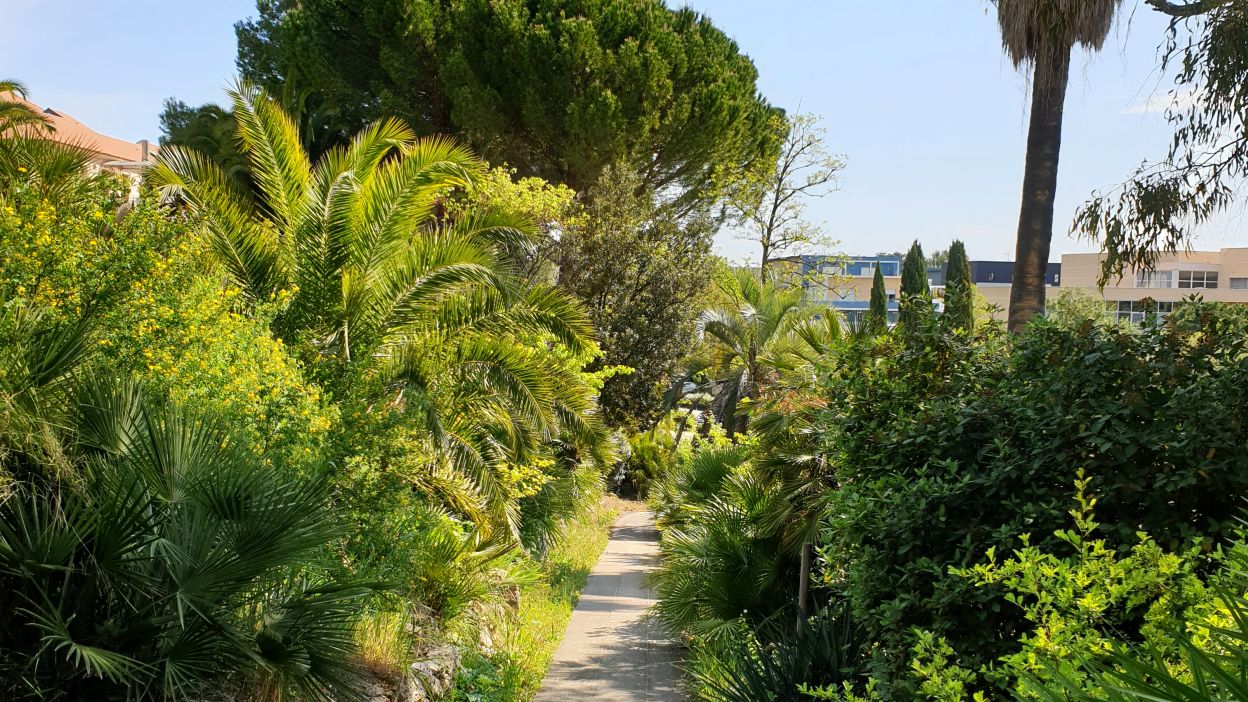
Privat
The path to the institute
Unfortunately, Covid-19 greatly limited life at the institute, for which reason I only had little contact with my other colleagues overall. Moreover, an evening curfew was imposed in May 2021 which only began to reduce little by little towards the end of the month. Within the bounds of what was possible, open-air gatherings with other doctoral candidates and students took place occasionally from June onwards. Through these I was able to make the acquaintance of people from many different countries and enjoy a pleasant exchange of ideas about the various fields of research in the natural sciences. While the older generation in France may from time to time be observed playing boule in the open air, another (albeit similar) game was popular among my colleagues. For this game, one throws a stick at smaller wooden pegs. Depending on which peg one hits or the number of pegs one knocks over, a certain number of points are awarded.
Montpellier and its environs
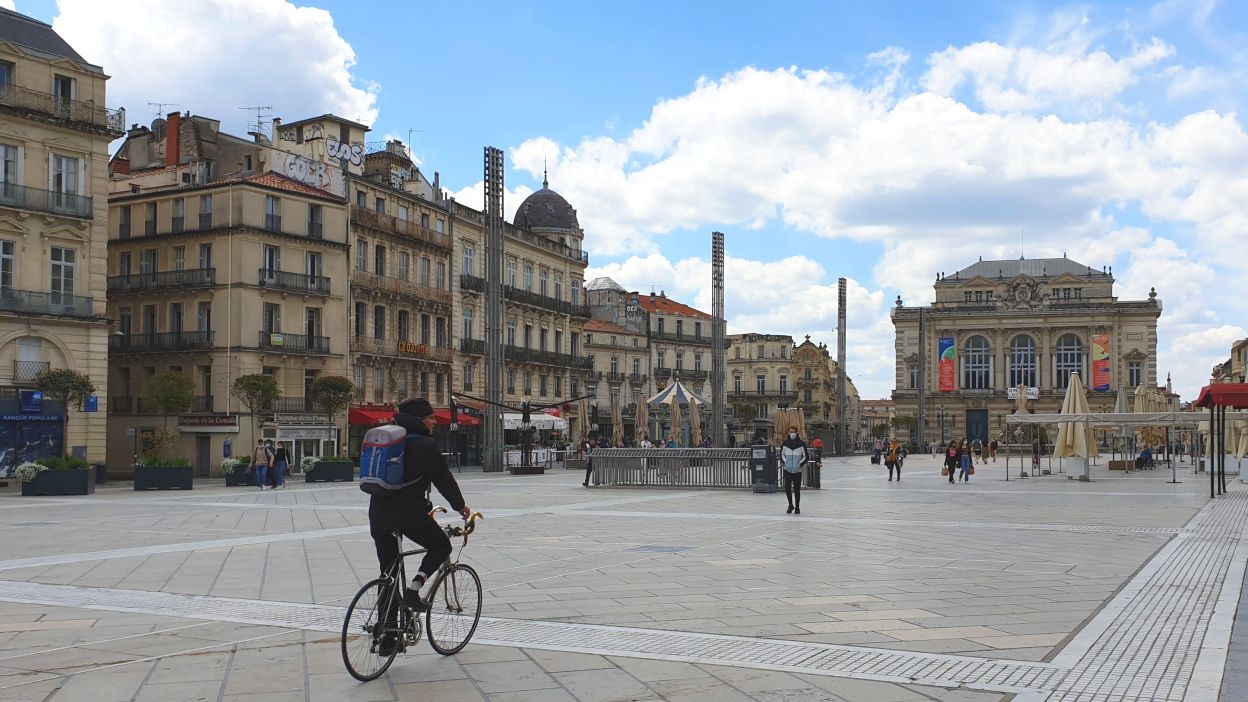
Privat
The almost empty Place de la Comédie
During my stay in Montpellier I lived in a shared flat with people from Algeria, Guadeloupe and Morocco, from which I have taken away friendships that will continue even after I have left France. Our conversations about our different cultures and experiences in our various countries, politics and even food were always lovely and insightful. It goes without saying that we often cooked together and always got to know something new.
However, it was very difficult to make contact with French people outside our shared flat or to get to know the local French culture. This was primarily due to the pandemic, with bars etc. closed for large parts of my stay. One of the bigger differences between French and German culture and cuisine is probably the role of bread or baguettes. My French colleagues only ever ate these as a small supplement to their meal, but I liked to make a packed lunch and try out many different kinds of cheese and baguettes. Doing this always earned me puzzled looks.
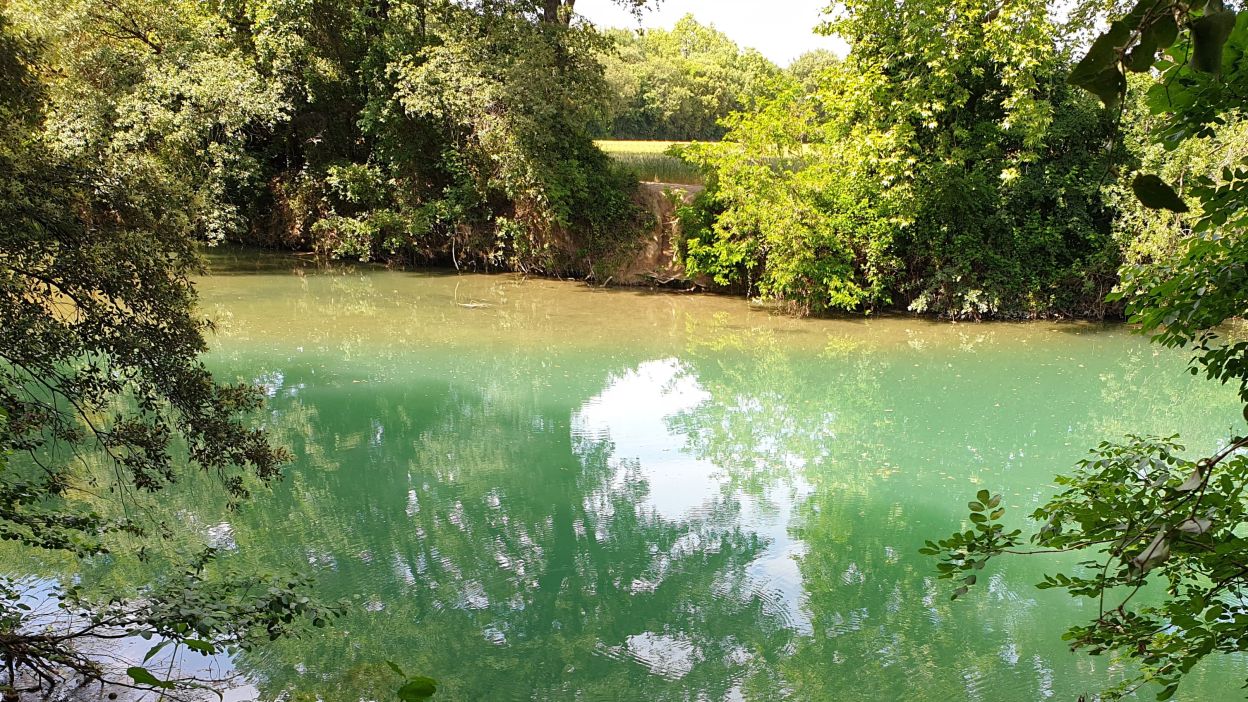
Privat
Le Lez river
Montpellier itself is in the south of France, not far from the Mediterranean. The nearby beaches are almost all connected to the tram network. All around Montpellier are major wine-growing areas and wine from this region bears the appellation Languedoc. To the north are the foothills of the Massif Central. What is strikingly different to German cities is that the majority of the buildings in the old town and the districts around it are painted the same colour, a bright beige. The various great churches in the old city are a perfect example of this. They do without any colourful decorations at all and are generally very unadorned.
Other sights of interest in Montpellier are of course the classic attractions such as the Place de la Comédie, the triumphal arch and Peyrou adjoining it, along with the botanical garden, which is also in the old city. The old city also offers an almost endless supply of places to pass the time in beautiful cafés, bars and restaurants. As the pandemic prevented me from experiencing these to the full, I took evening walks more often through the various districts of the city. An excursion along Le Lez, the largest river in the city, is highly recommended. The striking turquoise colour of the water is impressive.
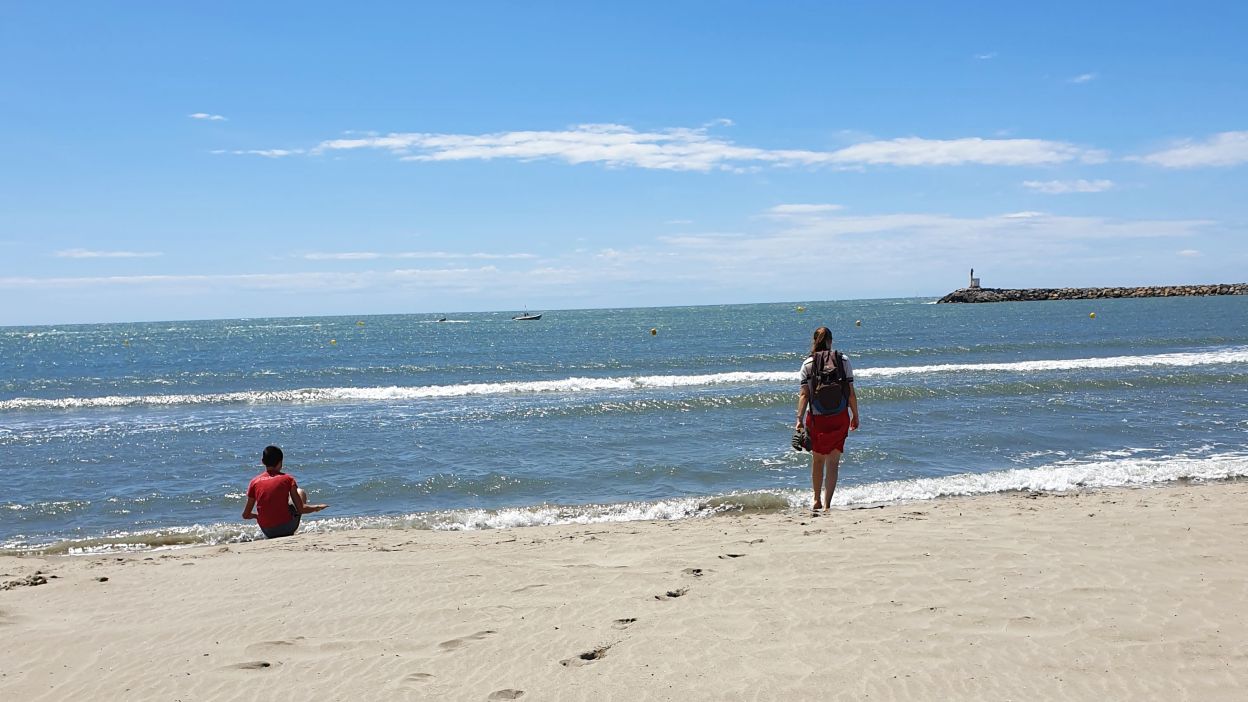
Privat
Trip to Saintes-Maries-de-la-Mer
To the south-east of Montpellier is the region of the Camargue, large areas of which are nature reserves. The flamingos and horses which you encounter everywhere are characteristic of the region. One port of call if you want to observe great numbers of flamingos is the Parc Ornithologique du Pont de Gau near Saintes-Maries-de-la-Mer. Saintes-Maries-de-la-Mer is a small town right by the sea where tourism has clearly made its mark. It is also worth taking an excursion to the fortress of Aigues-Mortes. To the north are the Cévennes, while not far away to the east is the Roman city of Nîmes with its very well preserved amphitheatre and pretty gardens leading up to an observation tower with wonderful views over the city.
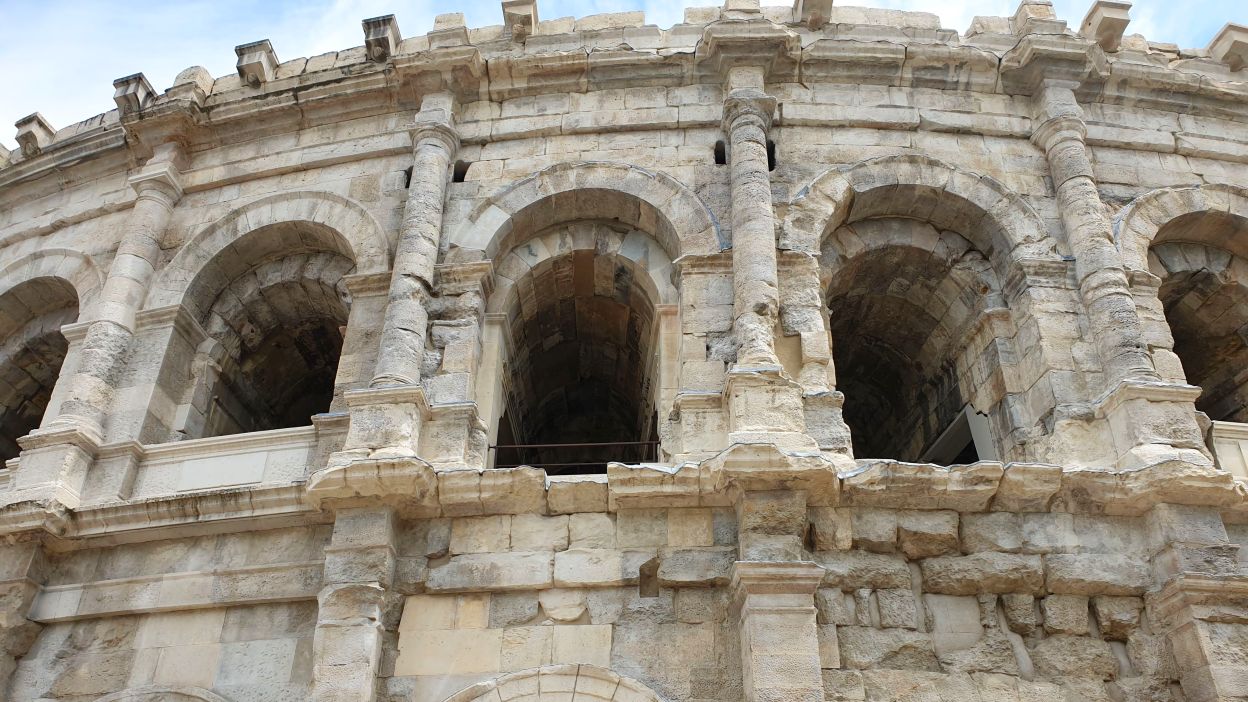
Privat
The Roman amphitheater in Nîmes
Acknowledgements
At this point I would like to thank the Prof Bingel Stiftung for providing financial support for my research project in France. My time at the SupAgro Institute in Montpellier made it possible for me to gain a deeper insight into bioinformatics and statistics for evaluating transcriptional data. In the same way I would like to thank Dr Gabriel Krouk and Morgan Maillard for their support and feedback whenever questions or suggestions arose concerning the next steps for evaluating the data. Fortunately a conference is soon to be held in the same place in Montpellier (‘Molecular responses of plants facing climate change’), which makes it possible for me to present the findings from my PhD thesis there. I will of course also take the opportunity to visit my former flatmates.
As of July 2021. The German version is the original.


